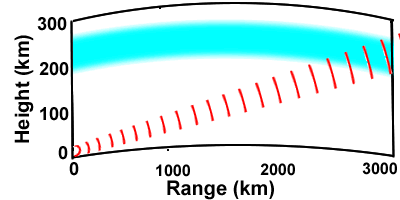
There are different ways that EM waves are transmitted through the Earth's atmosphere. These different ways are called modes of transmission. The transmission mode depends on the wavelength (frequency) of the radiation and on the particular use. Three common modes are the space wave, the surface wave and the sky wave.
The space wave transmission mode occurs when the EM radiation travels relatively unimpeded. (Figure 1). It is sometimes called "line of sight" transmission because it occurs between two points that could be visible to one another. Space wave is the only form of transmission in outer space, but it also occurs in the atmosphere. VHF, UHF and SHF radio waves use the space mode. When space waves are used by satellites to transmit information to the earth's surface they are sometimes called satellite waves.
 |
|
Figure 1. The space wave.
This and the following figures are phase displays.
|
Space waves aren't limited to strictly line of sight; in fact they rarely travel in exactly straight lines. Under normal atmospheric conditions, space waves bend back toward the earth somewhat and can therefore travel over the visual horizon. Also they can reflect off the ground If atmospheric conditions are suitable, space waves can bend enough so that the can follow the curvature of the earth and travel well beyond the horizon. What causes these conditions will be studied in detail in Module 4.
Other forms of EM radiation such as infrared, visible, ultraviolet, x-ray and gamma ray also travel as space waves, although usually the term is only used for radio waves.
Surface waves (Figure 2) travel along the surface of the earth and are affected by the characteristics of the surface, such as moisture, mineral content, soil and bedrock type, vegetation and other factors. Salt water (oceans) are particularly good for transmitting surface waves.
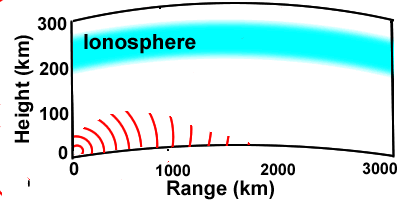 |
|
Figure 2. The surface
wave
|
Surface waves in the MF and HF radio bands are able to follow the surface and bend as they follow the earth's curvature. However, their energy is absorbed by the ground and therefore they cannot travel great distances.
Another type of surface wave is produced by very large wavelength (low frequency) ELF, VLF and LF radio transmissions. These waves are so large that they fill up the entire region between the ground and the ionosphere. These two surfaces act as waveguides that contain and direct the radiation. If the transmitter is powerful enough, these type of surface waves can travel great distances around the earth.
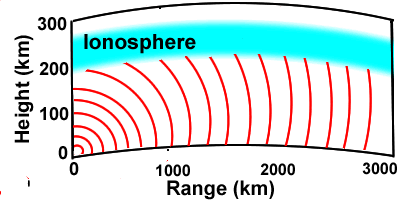 |
|
Space waves and surface waves together are called ground waves.
The other major type of transmission mode is the sky wave. These occur for HF radio transmissions. These waves are reflected (actually bent) by the ionosphere, which is several hundred kilometers above the earth's surface. Because of this high reflection, these waves are able to travel large distances. We will discuss this type of transmission in considerable detail in Module 3.
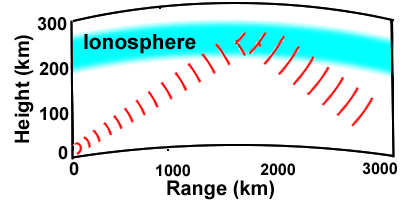 |
|
EM waves can be transmitted in many different ways. Depending on the wavelength, the can be bent in the lower atmosphere and the ionosphere and they can bounce off the surface. Some EM waves can penetrate clouds and travel through water or ground. We will study many of these processes in the following modules. Figure 5 summarizes the different transmission modes and shows in what parts of the radio spectrum the modes are effective and where the important areas of the atmosphere are for the different modes.
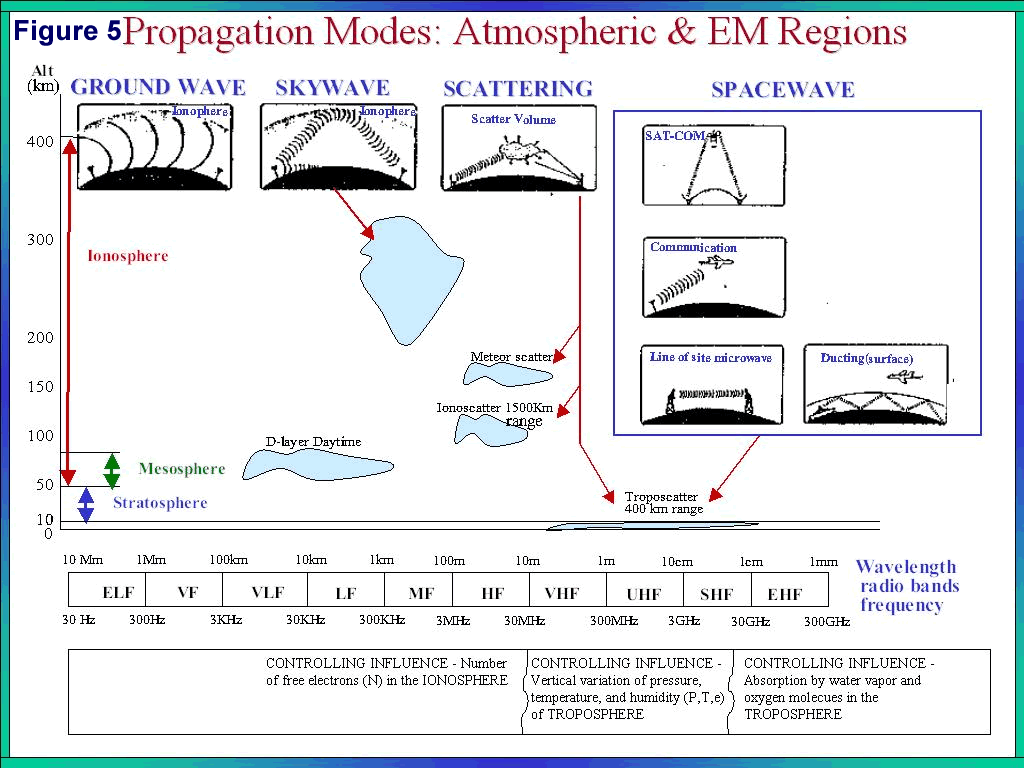 |
|
|